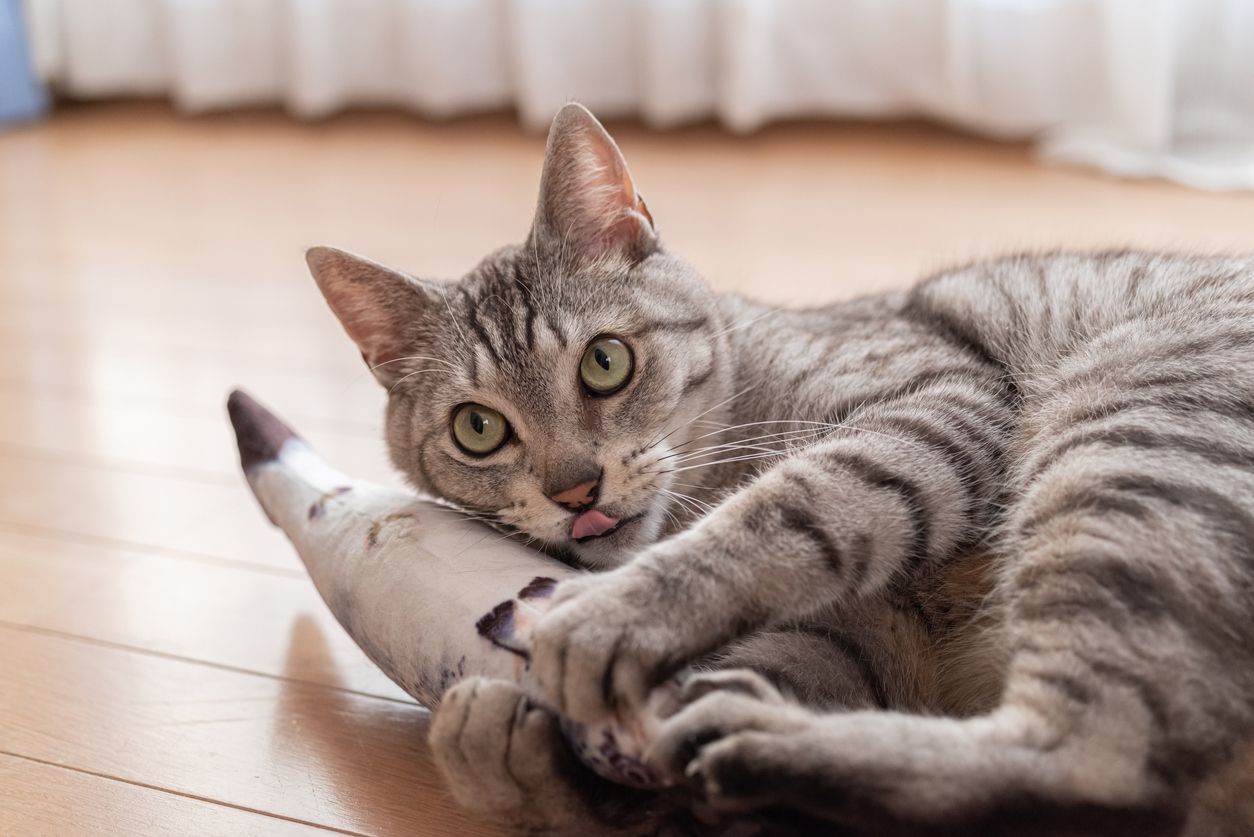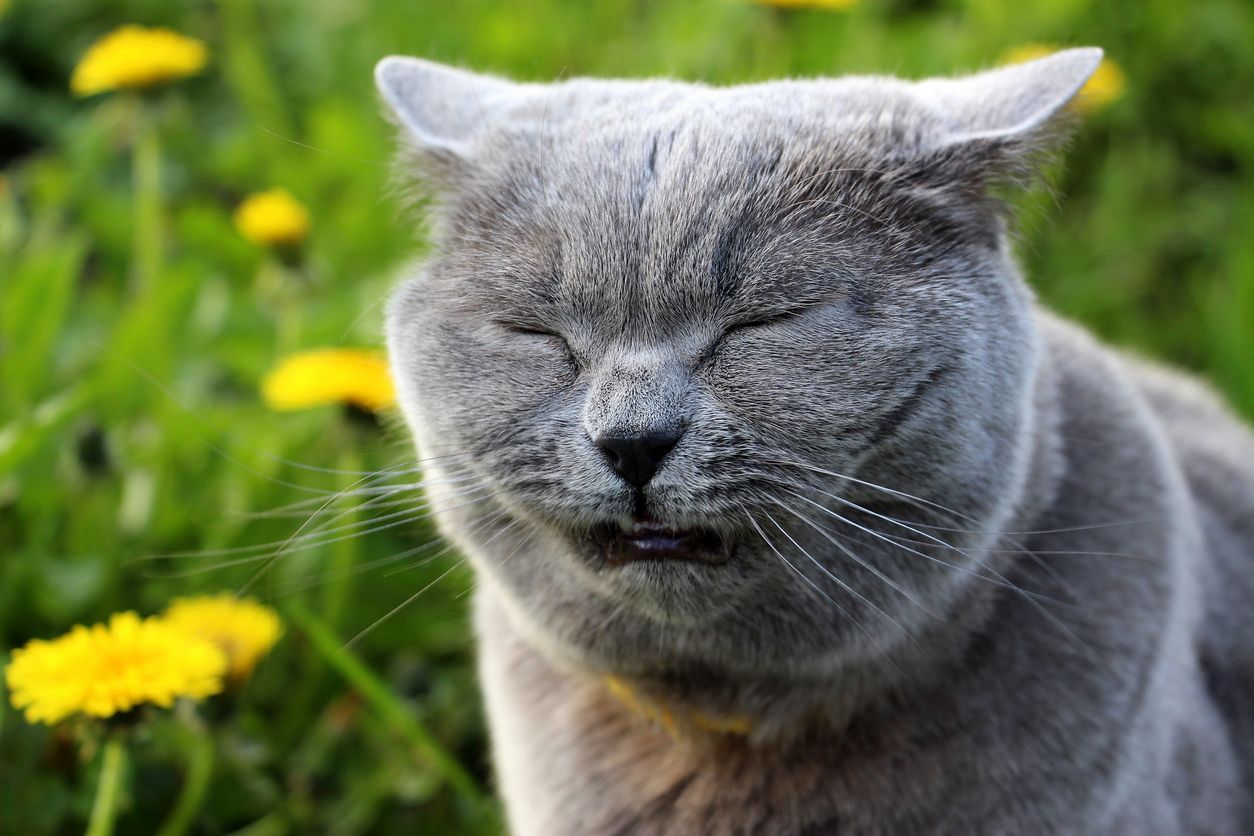5 enriching indoor activities for your senior cat

A senior kitty needs plenty of exercise, play, and bonding time with their owner, just like they did when they were younger. There are plenty of ways to provide for these needs as a cat grows older and their bodies change. Read on to learn:
- Why is physical activity important for my senior cat?
- What are the best ways to entertain my older cat?
- Are there activities I should avoid doing with my senior cat?
- How will my senior cat change, and how can I help care for them?
A lower energy level does not mean a cat is no longer interested in play. Physical stimulation and mental enrichment are just as important for a senior as they are for kittens. Finding new ways to play with your feline friend is important not only for them but for you as well.
Why does my senior cat need exercise and mental stimulation?
Just like with humans, cats of all ages require physical exercise and mental stimulation to remain happy and healthy. It’s a mistake to assume your senior cat is less active or playful due to “old age”. Senior cats, or cats 10 years or older, may require different methods of play over time to accommodate their individual needs. Special considerations for older cats need to be taken into account when choosing activities.
What indoor activities can I do with my cat?
There are lots of activities that provide senior cats with safe and fun forms of exercise and many kinds of mentally stimulating toys to help keep their minds sharp.
Provide various types of toys
Expect your elderly cat’s toy preferences to change as they age. Old favorites may become boring or too hard on their joints or teeth to play with. If this occurs, don’t assume your cat is too old to play. Instead, try new and different toys to keep them engaged and entertained.
Toys that promote batting, kicking, and rolling encourage joint and muscle movement in older cats. It is important to keep their bodies moving to help maintain a healthy weight and joint health. Wand toys and laser pointers are a great way for owners to further encourage movement at their cat’s own pace. Window perches with a view of the yard or even a bird feeder can provide entertainment for cats with low energy levels. Get creative and have fun coming up with new ways to keep your senior kitty entertained and thriving.
Have senior-friendly scratching pads and towers
Cats with arthritis or other mobility issues may have difficulty climbing towers or using vertical scratching posts, but this doesn’t mean they don’t want to. Having high places to perch and areas to scratch is important for a cat’s mental health and quality of life. Not being able to reach their favorite places can cause unneeded stress. You can help your older cat climb and scratch by:
- Providing ramps and smaller steps to get to their favorite perches
- Trying flat or slanted scratching pads instead of vertical posts
- Trying carpeted ramps or pet stairs to help your cat onto the couch and bed at night
Set up cardboard boxes and paper bags to explore
Cats are naturally inquisitive and enjoy exploring their surroundings, even as they grow older. Setting up a simple cardboard box with holes cut out can be a perfect way to promote exploration, especially if hidden treats or catnip sprays are involved. Paper bags with treats can also offer additional exploration and mental stimulation. Try bags with different textures materials which will produce different noises to make your cat’s sensory experience unpredictable and interesting.
Provide food puzzles and toys
Cats are hunters and benefit from working for their food. Tap into that hunting instinct by letting your cat solve a puzzle or work for their food. This keeps them entertained and provides increased mental stimulation. Some toys and puzzles also promote movement through batting for extra physical stimulation. Food puzzles work with treats,too, but be sure to limit your cat’s treat intake to less than 5 - 10% of their total daily caloric intake. Obesity prevention is another concern with senior cats, and it can be hard to know how many treats are too many. A nutrition consultation with an online veterinarian is a great way to get individualized recommendations for your cat’s circumstances.
Spend quality time grooming together
Some senior cats have a more difficult time grooming themselves, especially if they have arthritis or are obese. Mobility disorders are among the most common medical conditions for senior cats, and poor coat condition often results. “Dry, greasy scales and clumped hair often develop on the lower back over the hips and down to the tail where it is hardest to reach,” explains Dr. Jo Myers, a veterinarian at Vetster. “Keep an eye out for this and help your senior cat by combing, brushing, and petting this area.” This extra snuggle and grooming time supports their mental and emotional health as well as their skin and coat.

What types of activities should I avoid with my older cat?
Roughhousing and strenuous activities can be painful for arthritic cats and cause their joints to flare up, even if they seem to enjoy the activity in the moment. Jumping down from high places, using stairs, and navigating slippery floors present some of the biggest challenges for senior cats, so stick to safer spaces for playtime. Avoid forcing a cat to play or participate in an activity they do not seem interested in. Rather, let them lead and set the pace when they are feeling good and have enough energy to play. Stop the activity or switch to a new one if your cat seems tired, stiff, or in pain, even if they do not want to stop. If your feisty feline is adamant about playing anyway, modify the activity or try to redirect to more of a calm bonding session, like grooming or playing hide and seek. Talk to a veterinarian about what physical activities are best for your cat’s individual needs.
How do cats change as they get older?
Cats change physically and mentally as they age, just like we do. Physical changes you may see in your older cat include:
- Developing chronic health concerns such as obesity and dental disease
- Developing degenerative conditions like osteoarthritis
- Changes in hearing and vision
Keep in mind every cat’s journey to old age is unique. Not all cats develop the same health concerns as they get older, and not all changes are related to aging. As your cat’s body changes, you may need to alter their activities to accommodate what they are able to do. They may also need more help getting to their favorite spots around the house. Behavioral changes seen in senior cats can include:
- Less time spent grooming or in high areas
- More time sleeping
- Aggression due to pain or stress
- Difficulty using the litter box
- Confusion and behavior changes due to cognitive dysfunction
Most behavioral changes in elderly cats are due to the physical changes in their bodies. You can accommodate their changing needs by supplying ramps to their favorite places, litter boxes with low sides, and keeping food and water in easy-to-reach places. Providing a litter box on every floor of the house can also help.
Due to these physical changes and the higher likelihood of developing chronic health conditions, senior cats require more frequent wellness checks with a veterinarian. Their physical and mental needs may change more rapidly than when they were younger. Providing for these needs is as essential to a senior cat’s quality of life as it is for a younger cat or kitten. Virtual vet appointments are an excellent way to check in with a vet about any changes seen in your senior cat without causing additional stress by traveling to a clinic.
FAQ - Enriching indoor activities for your senior cat
How much exercise does a senior cat need?
Cats should get 5 to 15 minutes of playtime or exercise multiple times a day. Senior cats may be less interested in playing than younger cats, but should still exercise and play every day. Physical movement helps a senior cat’s joint health and aids in maintaining a healthy weight.
How can I help my senior cat exercise?
Try different toys to help your senior cat stay engaged in exercise and interested in play. Let them set the pace and lead the play, and make sure to avoid strenuous activities or roughhousing. Toys that dispense food may also keep them moving and engaged, but make sure to account for any food and treats given during playtime so you don’t overfeed..
How do I keep my senior cat entertained?
Senior cats tend to sleep more and be more sedentary than when they were younger. Keep them entertained through gentle play, food puzzles, games, and easy access to perches and high places. New toys or even simple cardboard boxes can also encourage them to play and explore.
Do senior cats get bored?
Senior cats need physical stimulation and mental enrichment, just like younger cats. Provide plenty of toys and mental stimulation with puzzles, grooming time, and play to keep them entertained.




